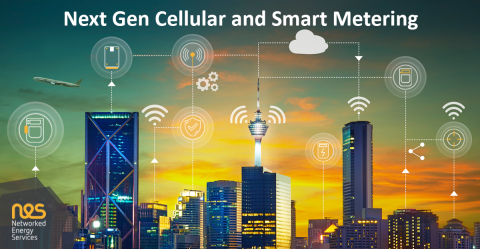
Next Gen Cellular and Smart Metering
Feb 10, 2022Smart meters have the potential to improve sustainability of our energy distribution grids by reducing losses in energy distribution and reducing new network build out. Whilst this stands on its own “green” credentials, this also benefits the energy distribution companies by reducing op-ex and cap-ex costs.
Smart meters do this by exposing information about end-point energy consumption and generation and the “quality” of energy which is received from the distributor. This information enables and assists DSOs with reconfiguring their grids to reduce losses and better use available capacity.
A foundational point is how to get to the information exposed by millions of devices in the field to the point where it can be analyzed. Smart meters have been utilizing cellular communication networks for years. There are many cellular option networks, but which technology is most suitable for smart metering? Some helpful criteria to consider are:
First of all, there are the legacy technologies, 2.5G and 3G. Whilst still in place in most countries, these are being phased out. With smart meter deployments looking at 10 to 15 years field deployment time, the potential of these technologies being discontinued would seem to disqualify them immediately. Then, let’s look at 4G. The technology is optimized for mobile media streaming – exposing wide broadband download services (18-36 Mbps typically) to highly mobile devices (smart phones in cars and trains) with applications highly dependent on low latency (around 50 msec) and high throughput (voice, video and other real-time applications).
This leaves us with the 5G LTE Cat 1, LTE Cat M1 and NB IoT. These have the advantage over 4G of having been designed specifically for IoT applications. In some countries, the last point effectively makes the decision – some countries have prioritized one technology over another. Fortunately, NB-IoT and LTE can work for the smart meter application, so, this is OK.
But, where a country’s infrastructure offers a choice, it is worth considering some comparison points because NB-IoT and LTE do have differences which will affect the efficiency of smart metering use-cases.
With smart metering communications, the key points to consider are:
- Getting to the high volume of information available; regulation is now driving for 15 minute comprehensive load profile data, and some applications are suggesting 5 minute and even 1 minute gathering of information
- Allowing connections to highly dense urban environments, with 10s of meters per 100 square meters in some cases
- Remote control of devices, for the purposes of demand control and response
- Remote configuration and update of FW and SW
- Having the option of deploying in basements and within multiple surrounding walls
- Reasonably low latency so that polling of millions of devices can be performed without having to wait between request/response.
Looking at the demands of smart meter communications, the case for LTE Cat M1 appears stronger, driven by the higher data rate, lower latency and better support for high density. Where a DSO is looking at the long-term capabilities of the smart meter to achieve long-term energy sustainability, the first option should be LTE Cat M1.
NES smart meters provide support for LTE Cat M1 and utilize technology components which make them easily adaptable to NB-IoT should that be the preference or constraint.
For more detailed information about cellular networks, please refer to this article.




